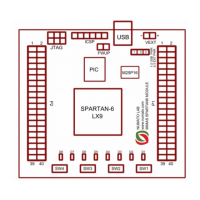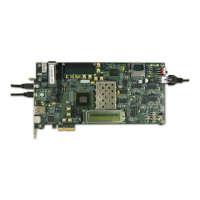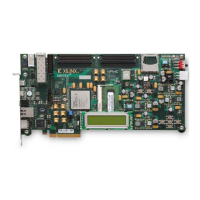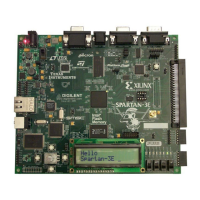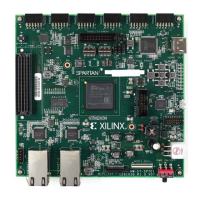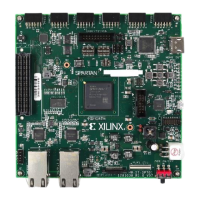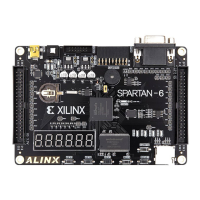42 www.xilinx.com Spartan-6 FPGA PCB Design and Pin Planning
UG393 (v1.1) April 29, 2010
Chapter 4: PCB Materials and Traces
Loss Tangent
Loss tangent is a measure of how much electromagnetic energy is lost to the dielectric as it
propagates down a transmission line. A lower loss tangent allows more energy to reach its
destination with less signal attenuation.
As frequency increases, the magnitude of energy loss increases as well, causing the highest
frequency harmonics in the signal edge to suffer the most attenuation. This appears as a
degradation in the rise and fall times.
Skin Effect and Resistive Losses
The skin effect is the tendency for current to flow preferentially near the outer surface of a
conductor. This is mainly due to the magnetic fields in higher frequency signals pushing
current flow in the perpendicular direction towards the perimeter of the conductor.
As current density near the surface increases, the effective cross-sectional area through
which current flows decreases. Resistance increases because the effective cross-sectional
area of the conductor is now smaller. Because this skin effect is more pronounced as
frequency increases, resistive losses increase with signaling rates.
Resistive losses have a similar effect on the signal as loss tangent. Rise and fall times
increase due to the decreased amplitude of the higher harmonics, with the highest
frequency harmonics being most affected. In the case of 10 Gb/s signals, even the
fundamental frequency can be attenuated to some degree when using FR4.
For example, an 8 mil wide trace at 1 MHz has a resistance on the order of 0.06Ω/inch,
while the same trace at 10 Gb/s has a resistance of just over 1Ω/inch. Given a 10 inch trace
and 1.6V voltage swing, a voltage drop of 160 mV occurs from resistive losses of the
fundamental frequency, not including the losses in the harmonics and dielectric loss.
Choosing the Substrate Material
The goal in material selection is to optimize both performance and cost for a particular
application.
FR4, the most common PCB substrate material, provides good performance with careful
system design. For long trace lengths or high signaling rates, a more expensive substrate
material with lower dielectric loss must be used.
Substrates, such as Nelco, have lower dielectric loss and exhibit significantly less
attenuation in the gigahertz range, thus increasing the maximum bandwidth of PCBs. At
3.125 Gb/s, the advantages of Nelco over FR4 are added voltage swing margin and longer
trace lengths. At 10 Gb/s, a low-loss dielectric like Nelco is necessary unless high-speed
traces are kept very short.
The choice of substrate material depends on the total length of the high-speed trace and
also the signaling rate.
What-if analysis can be done in HSPICE simulation to evaluate various substrate
materials. By varying the dielectric constant, loss tangent, and other parameters of the PCB
substrate material. The impact on eye quality can be simulated to justify the use of higher
cost materials. The impact of other parameters such as copper thickness can also be
explored.

